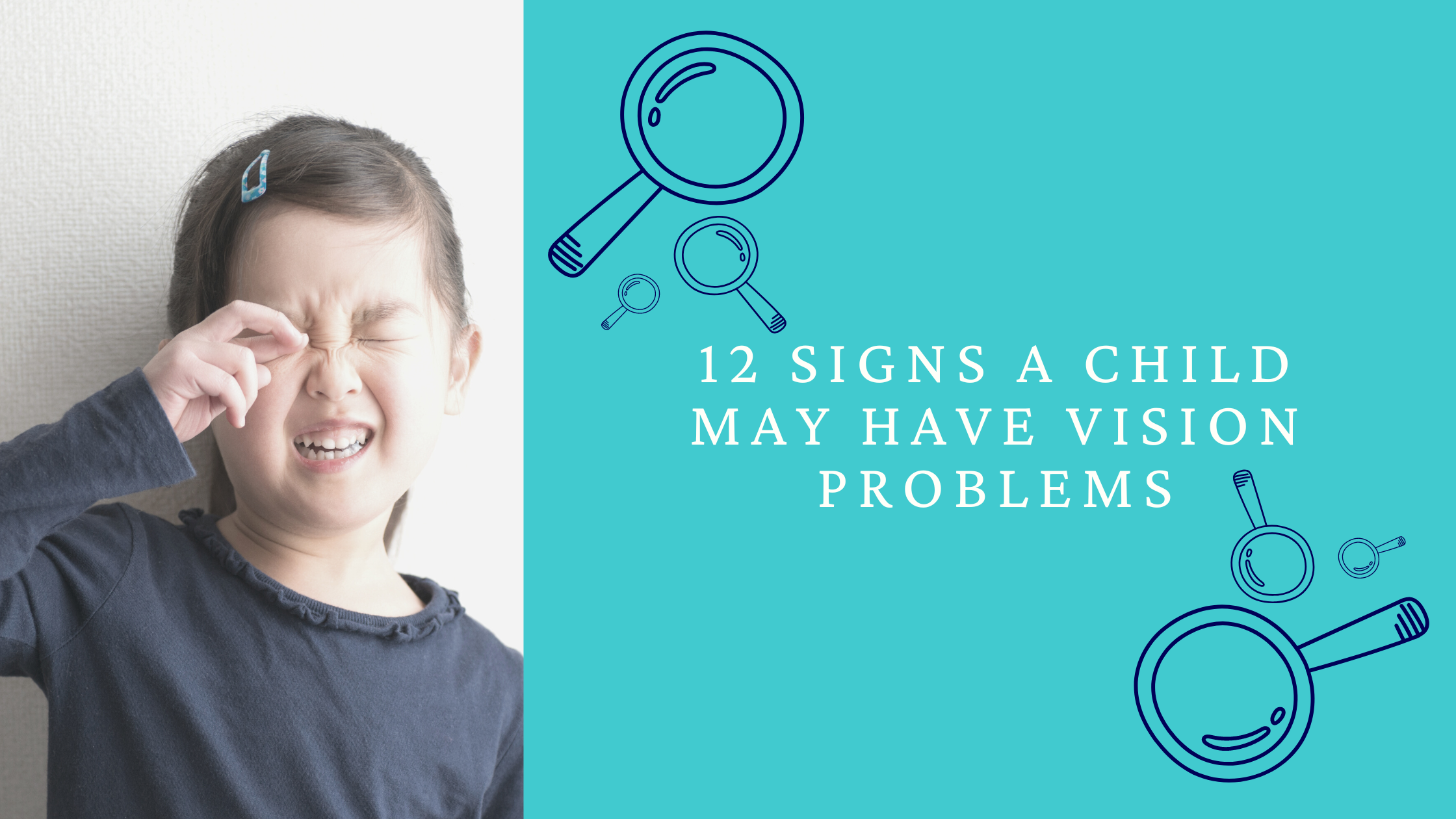 Many common pediatric vision problems such as astigmatism, lazy eye, amblyopia, retinoblastoma, or congenital glaucoma have plenty of indicators telling you it’s time to get an eye test for your young one. Here are a few signs that may tip you off.
Many common pediatric vision problems such as astigmatism, lazy eye, amblyopia, retinoblastoma, or congenital glaucoma have plenty of indicators telling you it’s time to get an eye test for your young one. Here are a few signs that may tip you off.
Infant Vision Problems
- Not Tracking Objects
A baby learns much about their surroundings by watching. They are unable to move themselves when they are very young. So they must take in the stimulus visually to understand what is happening. However, babies who cannot see clearly have more difficulty watching things move around them. If you see this in your baby, who is at least three months old, check with your pediatrician. - Not Holding Eye Contact
Consult your doctor if your baby will not hold eye contact with you or show recognition. One reason could be because your child can’t clearly see you, but there are also several other conditions that could be causing this to happen. - Eyes Crossing
This is a symptom that’s pretty easy to see. If you notice your baby’s eyes crossing or one eye drifting away from the other (after about four months of age), you may be dealing with a case of strabismus.
Vision Problems in Young Children
- Squinting
Squinting is an action everyone instinctively takes to decrease the amount of light or intentionally blur one’s vision. To someone with sight conditions, blurring the image in front of them can be an attempt to make it clearer. This is often the case in a person with myopia (nearsightedness) or hyperopia (farsightedness). - Rubbing Eyes
Much like squinting, a child who rubs her eyes is sometimes trying to alter the images sent to the brain. If the image is blurry, it may become less so when rubbing the eyes, which stimulates water production. If a child blinks excessively, that may be another clue that she is trying to clear her vision. - Head Tilting
Head tilting isn’t a symptom most people think of when looking for eye problems. However, it can indicate that your child’s eyes are not aligned properly. Misaligned eyes might not be sending clear images for the brain to interpret. When two different images are sent to the brain from the child’s two eyes, the brain must choose which one to believe. Over time, the brain will learn to favor one image (thus, one eye) and disregard the other. The disregarded eye could become a lazy or wandering eye.
Vision Problems at Any Age
- Cloudy Lenses
Cataracts are often associated more with aging than young children. However, juvenile cataracts are a condition to watch for when assessing a child’s eye health. Noticing cloudiness covering one or both of your child’s eyes can help you get to a diagnosis. A speedy diagnosis can then spur getting treatment quickly before more problems arise. - Drooping eyelids
A condition called ptosis occurs when one or both of a person’s eyelids cannot stay completely open. It’s more than just a cosmetic problem, however. If an eyelid stays completely closed, the weight of it can cause the eyeball to become misshapen. If a misshapen eye continues to grow, it can lead to astigmatism or other vision problems. - Light Sensitivity
A specific type of strabismus comes with a symptom of being sensitive to light. Overstimulation with light can also lead to headaches. - Headaches, Dizziness, or Nausea
When your brain works overtime distinguishing images not appropriately delivered from the eyes, it can rebel. A headache is the body’s way of saying, “I’ve had enough of dealing with this!” Similarly, dizziness and nausea can be trying to tell you something. The key is finding out what that something is. Starting with an eye test is a step in the right direction. - Trouble in School
The inability to see the board, read a textbook, or write legibly indicates that the child’s vision isn’t keeping up. His eye growth is unable to sustain his lifestyle. Because eyes continue to mature with a child, seeing these school problems can indicate a need for glasses. - Pain
Anytime your child is experiencing pain in their eye or eyes, their physician should be notified. If left untreated, something lodged in the eye can result in vision loss.
Your next step is to download the Kids Vision Check app, even if your child has not vocalized complaints about these symptoms. With a simple picture on your phone, you can obtain evidence that could prompt a vision check. With this app and regular vision screenings, you can contribute to your child’s vision health; and that could save their eyesight.
